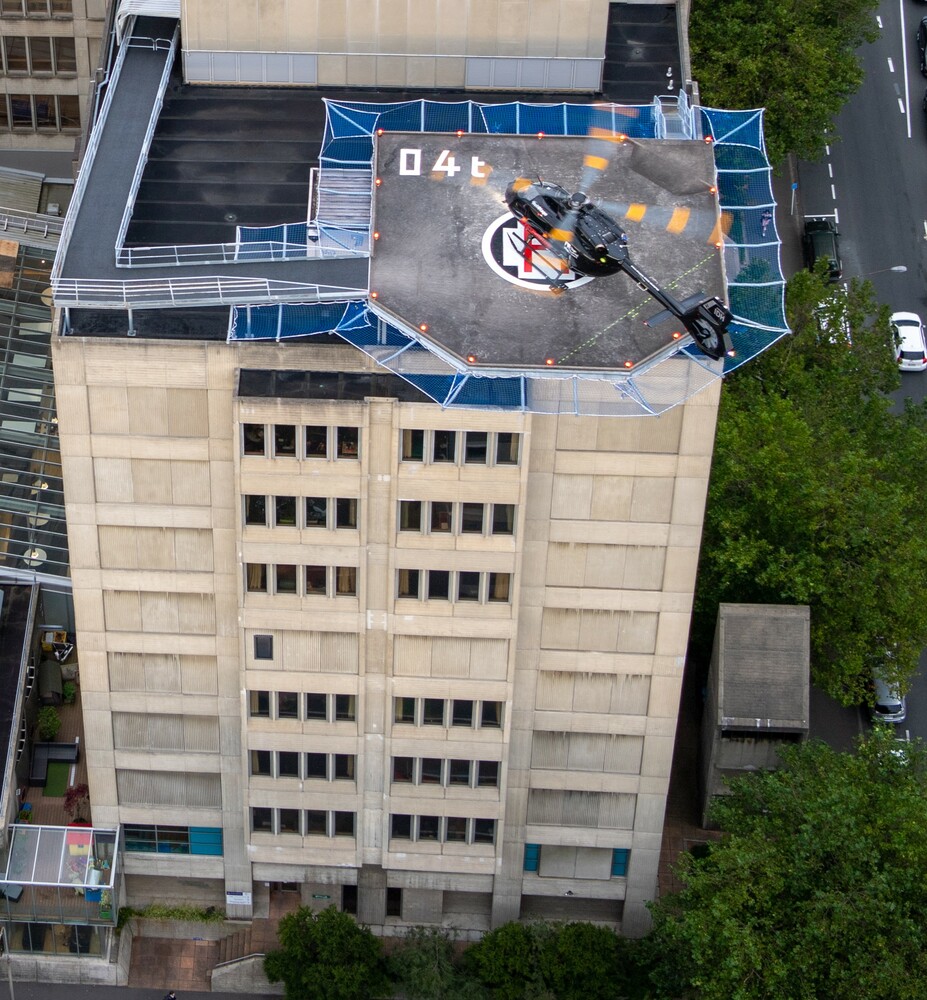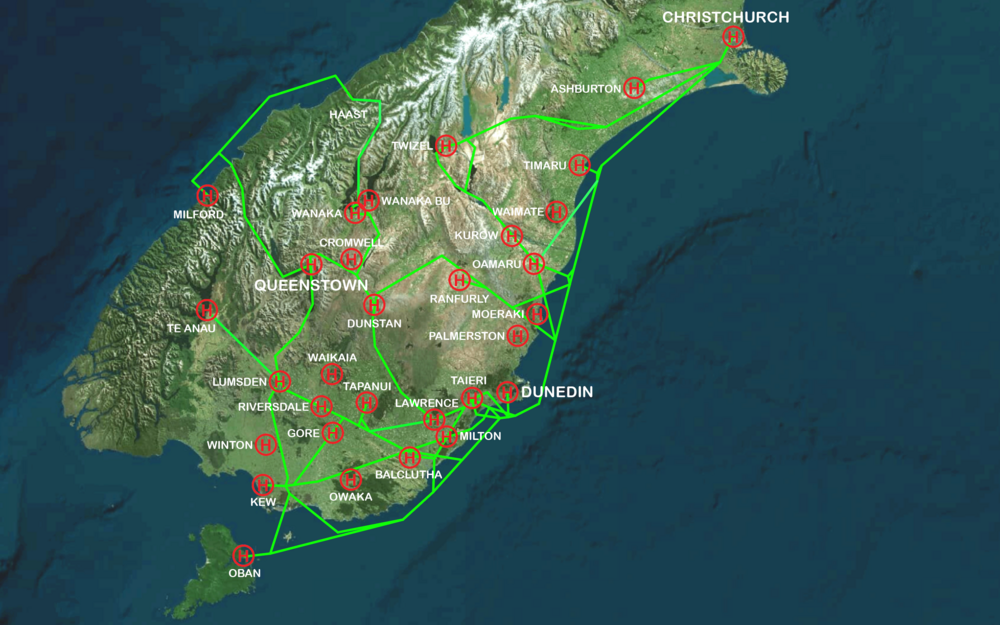Helipads and IFR Routes
Instrument Flight Rules Network
Life-saving flight routes enable "otherwise impossible" missions for the Otago Southland Rescue Helicopter service, thanks to funding from our Community. The network of IFR routes is a key piece of infrastructure for the Lower South region.
Find out moreHelipads

Dunedin Hospital helipad
In 1998, the newly launched Otago Southland Rescue Helicopter Trust gifted a helipad to Dunedin Hospital, with construction funded through a generous grant from the Otago Community Trust.
In life threatening emergencies when seconds count, being able to land on the hospital and bring patients to definitive care more quickly saves lives. Throughout the years, the helipad has made a huge difference to improving patient outcomes and saving lives.
Regional helipads
Many communities around the region have established CAA approved helipads, which have improved access for the rescue helicopters. Of concrete construction, the helipads can take the weight of the helicopters in all weather. They have lighting for night landings and access paths for stretcher loading and unloading.
IFR routes

Light aircraft traditionally fly using Visual Flight Rules (VFR) - the pilot must be able to see where they’re going. Larger aircraft can fly VFR, however they also have avionics, GPS and autopilot technology. This allows them to fly preassigned flight paths in conditions where pilots cannot see, using Instrument Flight Rules (IFR).
The Otago Southland Rescue helicopters and pilots fly IFR (single pilot) on routes designed specifically for rescue helicopters throughout the region. These routes enable the rescue helicopter to fly in weather that would otherwise prevent the mission being carried out. Many missions that would previously have been impossible because of low cloud can now be responded to greatly reducing the number of occasions on which weather conditions prevent a response.
The network of IFR routes enables rescues across the region, connecting through to key hospitals on the East Coast of the South Island.
Powered by




